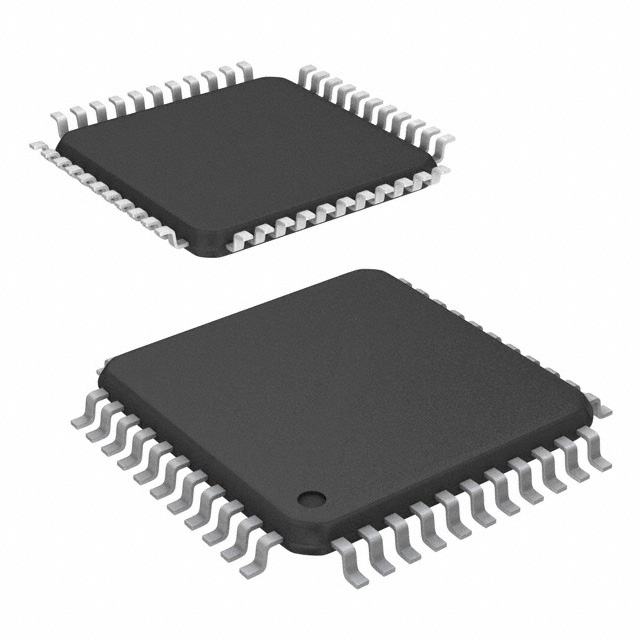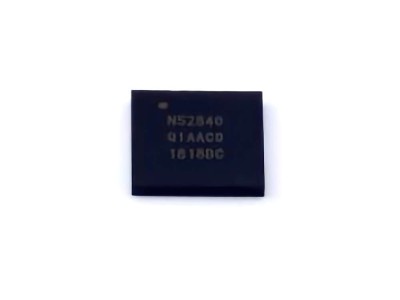
Understanding the ATMEGA16A-AU and Common Issues
The ATMEGA16A-AU is an 8-bit microcontroller from Atmel (now part of Microchip Technology) based on the AVR architecture. It is widely used in embedded systems, robotics, home automation, automotive applications, and other areas requiring a reliable and cost-effective microcontroller solution. Despite its robust design and popularity, users may encounter various problems during the development process, particularly when integrating the ATMEGA16A-AU into their projects.
In this section, we’ll explore the typical challenges and issues that developers may face when working with the ATMEGA16A-AU, followed by practical advice on how to troubleshoot and resolve these issues.
1. Power Supply Problems
One of the most common issues with Microcontrollers , including the ATMEGA16A-AU, is insufficient or unstable power supply. Microcontrollers like the ATMEGA16A-AU require a stable voltage level, typically 5V (or 3.3V for certain configurations), to operate correctly. A fluctuating or under-voltage power supply can cause unpredictable behavior, malfunctioning, or complete failure of the device.
Solutions:
Check Voltage: Ensure that the power supply provides a constant and adequate voltage (5V or 3.3V) as per your microcontroller configuration. A multimeter can help you measure the voltage at the microcontroller’s power pins.
Capacitors : Adding decoupling capacitor s (typically 100nF) close to the Vcc and GND pins of the ATMEGA16A-AU can help filter out noise and provide a more stable power supply. Consider using both bulk (10µF to 100µF) and high-frequency (0.1µF to 1µF) capacitors for improved performance.
Check Grounding: Ensure that all components in the system share a common ground. A poor ground connection can cause instability in the microcontroller’s operation.
2. Incorrect Clock Source Configuration
The ATMEGA16A-AU comes with several clock source options, including an internal RC oscillator, external crystal, and external clock. Incorrect clock settings can lead to the microcontroller failing to boot or operate at incorrect speeds. If the ATMEGA16A-AU is not receiving the correct clock signal or if the clock configuration is mismatched, it may not function as expected.
Solutions:
Review Fuses : The ATMEGA16A-AU uses fuse bits to configure its clock source. If the microcontroller is not using the correct clock, check the fuse settings using a programmer or an in-system programming (ISP) tool. The ATMEGA16A-AU’s default setting might be different from your required configuration.
Use Correct Oscillator: If using an external crystal or oscillator, verify that the crystal is of the correct type and properly connected. Ensure that the ATMEGA16A-AU’s capacitors (typically 22pF) are correctly placed between the crystal pins and GND.
3. Communication Issues (USART, SPI, I2C)
The ATMEGA16A-AU offers various communication interface s such as USART, SPI, and I2C. Communication failures can occur if the configurations are incorrect or if there are issues with the wiring.
Solutions:
Check Baud Rate: For USART communication, ensure that the baud rate set in the software matches the baud rate of the external device. An incorrect baud rate will result in garbled communication or failure to communicate.
Verify Pin Connections: For SPI and I2C, check that the appropriate pins (MOSI, MISO, SCK for SPI, or SDA, SCL for I2C) are correctly connected. Ensure that there are no shorts or open connections.
Pull-up Resistors for I2C: The I2C protocol requires pull-up resistors on the SDA and SCL lines. If these resistors are missing or improperly sized, the communication may fail. Typically, 4.7kΩ resistors work well.
4. Improper Programming or Bootloader Issues
When working with embedded systems, programming the ATMEGA16A-AU correctly is essential. If the microcontroller is not properly programmed or if the bootloader fails, the device may appear unresponsive or may not execute the expected functionality.
Solutions:
Check Programmer and Connections: Verify that the programmer is properly connected to the ATMEGA16A-AU, and check for any loose connections or faulty cables. Ensure that the programmer is compatible with the ATMEGA16A-AU and is properly set up in your development environment.
Verify Code: Ensure that the code uploaded to the ATMEGA16A-AU does not contain errors. Use debugging tools like breakpoints, serial print outputs, or an external debugger to inspect the execution flow.
Reset Vector: If the ATMEGA16A-AU is not running your program, ensure that the reset vector (start of the program) is set correctly. The microcontroller should begin executing from address 0, so make sure no code or fuse setting is preventing the proper start.
5. Inadequate Debugging Tools
Debugging embedded systems can be challenging, especially when dealing with hardware issues that are not easy to diagnose. However, using the right tools and techniques can simplify troubleshooting.
Solutions:
Use a Logic Analyzer or Oscilloscope: A logic analyzer or oscilloscope can be a valuable tool to check signal integrity, especially for communication protocols like SPI, I2C, or USART. These tools can help you verify that the expected signals are being transmitted and received correctly.
Serial Monitor Output: If your system allows for it, using a serial monitor to output debugging information (e.g., using USART for debugging) can help you understand what’s going wrong in the code execution.
Advanced Troubleshooting and Optimizing Performance
While the issues covered in Part 1 are common and easy to resolve for most developers, some problems can be more intricate or require advanced troubleshooting techniques. In this section, we will delve deeper into more advanced ATMEGA16A-AU troubleshooting strategies and offer tips on optimizing the performance of your embedded systems.
1. Interference from External Components
In complex embedded systems, external components such as sensors, motors, or communication module s may introduce noise or cause the ATMEGA16A-AU to behave unpredictably. This is especially true when components are not properly isolated or when power and ground connections are improperly routed.
Solutions:
Shielding and Proper Routing: To minimize electromagnetic interference ( EMI ), consider placing sensitive components like the microcontroller and oscillators in a shielded area. Keep the high-speed signal traces short and isolated from noisy power lines. Use ground planes to improve signal integrity.
Ferrite beads and Inductors : Ferrite beads or inductors can help filter high-frequency noise on power or data lines. Placing them near the microcontroller’s power input can prevent high-frequency noise from affecting the device’s operation.
2. Memory Corruption or Stack Overflow
Memory issues, such as stack overflow or corruption of SRAM, can cause the ATMEGA16A-AU to behave erratically or crash. These issues often arise due to poor memory management or when the available memory exceeds the allocated space.
Solutions:
Use the Watchdog Timer: The watchdog timer can help reset the microcontroller if it becomes unresponsive due to a memory issue or crash. Regularly feed the watchdog timer to ensure the system is working as expected.
Optimize Memory Usage: Review the memory usage in your application, especially when dealing with large data structures or arrays. Use smaller data types when possible and minimize the use of dynamic memory allocation.
Check Stack Size: If your application is running into stack overflow issues, consider reducing the depth of recursion or optimizing the function calls to use less stack space.
3. Overheating and Thermal Issues
Although the ATMEGA16A-AU is relatively efficient, excessive heat due to poor power supply, insufficient cooling, or overclocking may cause it to malfunction.
Solutions:
Monitor Temperature: If the microcontroller is operating in a hot environment, monitor the temperature of the microcontroller using thermal sensors or by measuring the temperature of the PCB near the microcontroller.
Heat Sinks and Proper Ventilation: If heat buildup is an issue, consider adding heat sinks or improving airflow in the system. Use thermal paste to improve heat dissipation if necessary.
4. Fuse Configuration and Resetting the Microcontroller
The ATMEGA16A-AU uses programmable fuse bits to configure various settings like clock source, startup options, and other behavior. Incorrect fuse settings can render the microcontroller inoperable, so understanding fuse configuration is essential.
Solutions:
Check and Reset Fuses: If you have made changes to the fuse configuration and the microcontroller no longer operates as expected, you can use a programming tool to read or reset the fuses. Some fuses, such as the ones controlling the startup behavior, can prevent the microcontroller from starting correctly if misconfigured.
Use Software to Modify Fuses: In some cases, fuse settings can be modified using software commands (if available in your development environment). Always double-check the fuse settings to ensure they match your intended configuration.
5. Performance Optimization and Code Efficiency
Performance can often be a bottleneck, especially when working with resource-constrained devices like the ATMEGA16A-AU. Optimizing your code and making efficient use of system resources can result in faster and more responsive applications.
Solutions:
Optimize Interrupts: Interrupt-driven programming is essential for time-sensitive operations. Ensure that interrupt service routines (ISRs) are as short and efficient as possible. Avoid using functions with large delays in ISRs, as they can block other critical interrupts.
Utilize Sleep Modes: The ATMEGA16A-AU supports various sleep modes to conserve power. Use sleep modes when the microcontroller is idle or waiting for events, to reduce power consumption and improve overall system efficiency.
By addressing the issues outlined in this article, you can ensure that your ATMEGA16A-AU-based project runs smoothly and reliably. With careful attention to power supply, clock configuration, debugging, and communication protocols, most issues can be quickly diagnosed and resolved, allowing you to focus on creating innovative and functional embedded systems.
If you’re looking for models of commonly used electronic components or more information about ATMEGA16A-AU datasheets, compile all your procurement and CAD information in one place.
( Partnering with an electronic component supplier) sets your team up for success, ensuring that the design, production and procurement processes are streamlined and error-free. (Contact us) for free today.

